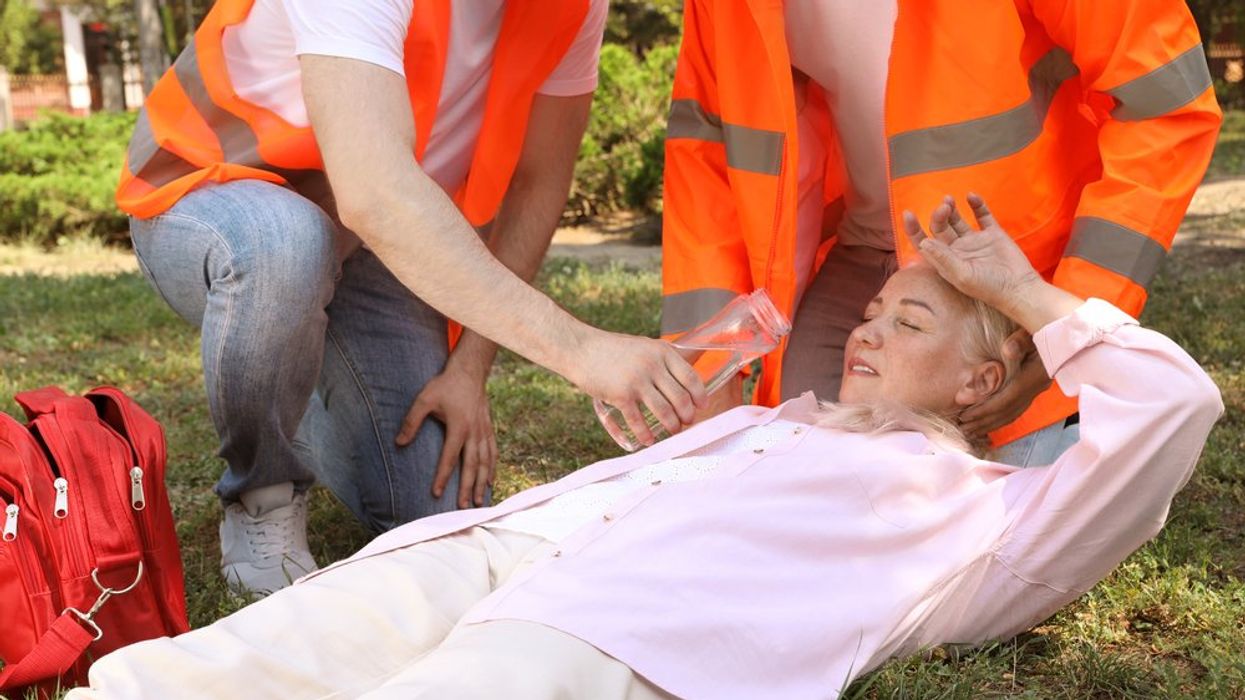(CNN) — Hospitals typically have a system in place to get care quickly to patients who need it most. Alerts may be issued to get prepared for patients that EMT’s are bringing in with strokes, cardiac problems, severe trauma and bleeding that need quick care, but there’s typically no such provision for heat stroke, another condition that demands immediate care.
As the planet warms and more of the United States faces record high temperatures and unprecedented levels of heat exposure, health care providers say now is the time for medical systems to be proactive. It’s also time for providers to be mindful that weather may be playing a bigger role in their patients’ illnesses than they’re used to.
On Thursday, more than 140 million people are under heat advisories in nearly three dozen states from coast to coast. In the Midwest, temperatures are up to 20 degrees above normal. In the Northeast and Mid-Atlantic, a dangerous heat wave is beginning and will continue through the weekend.
“Heat stroke is just another one of those life-threatening conditions that I think catches a lot of people off-guard,” said Dr. Caitlin Rublee, an emergency room physician and an assistant professor of emergency medicine at the University of Colorado School of Medicine.
Heat stroke is one of the most common and most deadly heat-related illnesses, and it becomes a significant problem during heat waves. Even though heat deaths and illnesses are totally preventable, extreme heat is the No. 1 weather-related killer in the United States, according to the US Environmental Protection Agency. And heat waves are becoming more common in the US. In the 1960s, Americans saw about two heatwaves a year; by the 2010s, there were six per year, according to the EPA.
There are about 20 cases of heat stroke per 100,000 people each year in the US, studies show, and between 240 and 833 deaths from the condition. For a variety of reasons, both numbers are probably a significant undercount, experts say.
The elderly, the very young, people with underlying health conditions, those who are overweight and those on certain medications are most vulnerable, according to the US Centers for Disease Control and Prevention. The past two decades have seen a 54% increase in heat-related mortality among people 65 and older alone, studies show.
Even healthy young people can get heat stroke, particularly if they are working or exercising outside when temperatures are high. Heat-related illness is the leading cause of death and disability among US high school athletes, according to the CDC.
Heat stroke is not an actual stroke. It’s when the body quickly overheats and can no longer use its usual tricks like sweat to cool itself down.
Providers need to cool the person quickly, ideally within the first half-hour of symptoms. Often, though, without an alert system like they might have for standard stroke, emergency room staffers are scrambling to help those patients, according to Dr. Cecilia Sorensen, an emergency room doctor who is director of the Global Consortium on Climate and Health Education at Columbia University.
“If you have 30 minutes to cool the body and you have to set up this while situation, it becomes very, very difficult,” Sorensen said. “We’re not always prepared.”
If the person’s core temperature gets to 106 degrees or higher, their internal organs can shut down within just 10 or 15 minutes.
One of the challenges with heat stroke is that it can look like a lot of other conditions that send people to the ER. Its symptoms include a temperature of 103 or higher; hot, red, dry or damp skin; a fast pulse; headache; dizziness; nausea; confusion; and loss of consciousness.
Rublee says she tells all her trainees that they should consider heat stroke as a possibility for any fever they see in an ER, especially on warm days.
“We get a lot of patients with fever, and it could be anything, so we treat many things at once,” she said. “There’s no downside to cooling these patients, ideally within 30 minutes.”
Sorensen, whose research focuses on the effects of climate on health, said that even she needs a reminder every once in a while to be on the lookout for heat stroke.
She wasn’t thinking about her research recently when she was trying to figure out what was wrong with an older male patient in a Colorado ER.
The man had passed out. He had some underlying health issues, Sorensen said. When his family arrived at the hospital, they helped her solve the mystery.
“They’re like, ‘Oh, yeah, we showed up at his house. It was 95 degrees inside,’ ” Sorensen said. His exposure to that heat was the problem.
“I mean, I’m a climate doctor, for God’s sake, and I’m sitting there trying to work up his heart issues,” she said.
Sorensen’s Global Consortium is trying to make it so every health care provider considers weather as a factor in health problems. An alliance of more than 300 deans of health professional training schools in more than 60 countries, the group has pledged to train students in climate and health. Sorensen said she even became a write of medical board questions just so she could get something on the test that involved climate change, heat and air pollution.
“We have to prepare emergency departments to be able to incorporate climate into their thinking, because with something like heat stroke, it’s almost like having a heart attack or a stroke. It’s that urgent to get treatment now,” Sorensen said.
Dr. Caleb Dresser, an emergency room physician and director of health care solutions at the Harvard Center for Climate, Health, and the Global Environment, said public health data shows that heat-related mortality for a given temperature increases 5% as you go from south to north in the US.
“It doesn’t have to get as hot in Northern states as compared to Southern states, presumably because of differences in societal, physiological, cultural, health care adaptations,” Dresser said.
As he looks to a future in which there will be “escalating hazards related to climate change,” he thinks people generally need to do more to reduce greenhouse gas emissions and stave off the worst that climate change could produce. In the meantime, doctors and medical systems have to adapt better to the hazards that are already affecting their patients.
“This heat wave is well beyond what we would expect without climate change, and we need to plan for this and take the steps we can to keep people safe and prevent this hazard from turning into health harms,” Dresser said.
Dresser’s group has developed a toolkit for health professionals and patients to help them take steps to stay safe during hot weather. Harvard is also piloting a program that will send targeted alerts to nurses, doctors and other health care professionals at clinics in areas with dangerously high temperatures.
The alerts will provide information about the heat and about some actions they can take to help keep patients safe. He hopes to have information about the program’s effectiveness later this year.
The best way to manage heat-related illnesses, Dresser said, is to be proactive. Always check the weather before you go out. In extreme heat, try to stay indoors if you can. If you have to go out, do it in the morning, when temperatures are a little lower. Drink lots of fluids, and wear loose-fitting lightweight clothing and sun protection. Also check on your elderly neighbors, relatives and others who may be vulnerable to the worst health outcomes from heat.
Talking about the weather may be considered small talk, but when it comes to health, it’s more than that.
“People need to be paying attention to the temperatures,” Dresser said. “There is a lot we can do as individuals and as a society to keep people safe during hot weather.”
The-CNN-Wire
™ & © 2023 Cable News Network, Inc., a Warner Bros. Discovery Company. All rights reserved.

















































